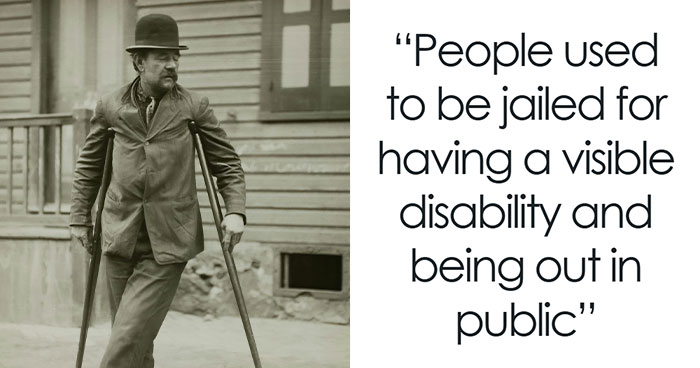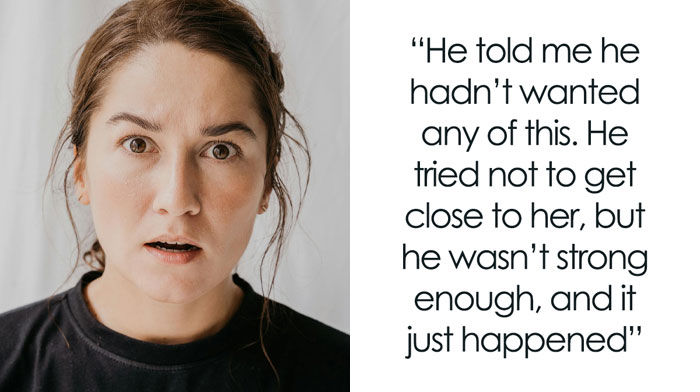Have you ever wondered what Europe looked like before or during the Second World War (WWII)? Take a look at our “before and after” or “then and now” images and see what the war did to the people, the monuments and the landscapes.
Head over to our site for an interactive version of each image and many, many more!
Let us know what you think about the images below in the comments
More info: re.photos
This post may include affiliate links.
Burning Peterhof
Burning Peterhof Palace after the Nazi invasion. 1941 September.
Before photo: Unknown author, after photo: Sergey Larenkov.
Avenue Foch (Occupation Of Paris)
On June 14, 1940, troops of the German Wehrmacht occupy Paris. The picture shows the victory parade of the German 30th Infantry Division on the Avenue Foch in front of General Kurt von Briesen 1886-1941.
Before photo: Deutsches Bundesarchiv, after photo: Nicolai Wolpert.
Cinema In Żnin During German Occupation
Catholic house transformed by the Germans into a cinema. 1941.
Before photo: Unknown author, after photo: Filip.
Captured German Soldiers At Juno Beach
Captured German Soldiers at Juno Beach shortly before their deportation to England.
In the background, the villa "Denise et Roger" can be seen. It is one of the most famous places in the time of D-Day.
1994, June 6th.
Before photo: Ken Bell, after photo: Lena.
Place De La Concorde (Liberation Of Paris)
A crowd celebrates the arrival of Allied troops during a victory parade for the liberation of Paris, as suddenly shots from a sniper on one of the roofs are heard. Quickly the Parisians scatter for cover. Although the city was officially abandoned by the Germans, small bands of snipers remained active, which made the victory celebrations risky.
1944, August 29.
Before photo: National Archives and Records Administration, Washington, after photo: Nicolai Wolpert.
Cherbourg-Octeville
The city center and US troops in June 1944. Several US vehicles are parked on the Quai de Caligny west of the rotary bridge.
Before photo: Unknown author, after photo: Hegemonus.
After over 70 years the wrought iron balcony still looks great
Aachen Rathaus
Southside of the Aachen Town Hall at Katschhof at the end of World War II.
The town hall is one of the most important buildings in the historic center of Aachen. It was repeatedly rebuilt and expanded over many centuries. The oldest part of the monument is the Granusturm from the time of Charlemagne.
During World War II, the town hall suffered badly from several bombing raids. On 14 July 1943, the roof and both City Hall towers burned out, the steel skeletons of the tower domes bent by the heat dominated the appearance of the town hall for a few years.
Rebuilding followed in the 50s; last, the two-tower caps were finished in 1978.
Before photo: Stadtarchiv Aachen / Stadtbildstelle, after photo: Nicolai Wolpert.
Oh, I just visited it. My girlfriend is living in Aachen. Back when France and Germany where one country, Aachen was our capital!
German Prisoners At The Station In Bernières
Captured German soldiers await their transport at the railway station in Bernières-Sur-Mer. Today, the old station building serves as the tourist office. 1944.
Before photo: Unknown author, after photo: Lena.
Notre-Dame (Liberation Of Paris)
Priest 105mm self-propelled guns of the French 2nd Armoured Division in front of Notre Dame in Paris, 26 August 1944.
Photo of the Imperial War Museum (IWM).
Before photo: IWM (BU 127), after photo: Nicolai Wolpert.
German Soldier In Alkmaar
German soldier in Alkmaar at the Langestraat. 1941.
Before photo: Unknown author, after photo: Regionaal Archief Alkmaar.
The Dam Busters
In May 1943, the Allies dropped specially developed "bouncing bombs" on select dams in Germany's industrial heartland. The Möhne dam was the hardest hit and 1600 civilians died in the flooding. The attack was dramatized by The Dam Busters (1955).
Before photo: Schalber, after photo: jamesvdm.
It was effective but also a war crime for killing so many Civillians in the process.
Rue St. Placide
August 1944. Since 1940, Paris is occupied by German troops. As the Allied army approaches the capital, this encourages the Parisian population to resist. It comes to a general strike, followed by open revolts. Everywhere in the city (such as here in the rue St. Placide) barricades are erected, and around the 20th of August, the Resistance has taken control of the city. Although militarily inefficient, these barricades had a symbolic character for the Paris uprising.
Before photo: Jean-Jacques Lebel, after photo: Nicolai Wolpert.
Reminds me of that scene from Les Miserables, Enjolras and the boys on the barricade
Villa Denise Et Roger At Juno Beach
The villa "Denise et Roger" is one of the most famous places of the time of D-Day. The region around Bernières-Sur-Mer was liberated by Canadian soldiers on June 6. 1944.
Before photo: Archives Nationales du Canada, after photo: Lena.
I wonder if the strafing on the side of the building in the first photo was from aircraft fire. It looks like it came from the direction of the water.
Hoofdkwartier Wehrmacht
German officers in the headquarters of the Wehrmacht in Huize Voorhout in Alkmaar. 1942.
Before photo: Unknown author, after photo: Regionaal Archief Alkmaar
Locals Welcome The German Soldiers
In the background is the Assumption Cathedral. 1941.
Before and after photo: Lena.
Well people forget that is some parts of Eastern Europe like Lithuania, Estonia, Ukraine, etc, the locals welcomed the Nazi's as liberators from Stalins rule, though within a few months most turned on the Nazi's (Outside of the Facists in those countries who joined the SS Auxilary and helped the occupation) when they realized the Nazi's were worse than Stalin.
San Lorenzo, Rome
San Lorenzo, Rome after the allied bombing on 19 July 1943.
Before photo: LaRepubblica, after photo: GoogleMaps.
Palais Chaillot
Paris in September 1944, shortly after the recapture. To protect against potential German counterattacks, an anti-aircraft gun is provisionally installed by American soldiers in the park of the Palais de Chaillot.
Before photo: anonym, Agence Gamma Rapho, after photo: Nicolai Wolpert.
Rentforter Straße
Destroyed tram and houses in the Rentforterstrasse in Gladbeck, end of the Second World War. The house with the gabled facade in the background is the main entrance of the St. Barbara hospital.
Today there are no more tramways in Gladbeck. 1945.
Before photo: Vestische Straßenbahnen GmbH, after photo: Nicolai Wolpert.
Opéra Garnier (Occupation Of Paris)
The Opera Garnier decorated with swastikas for a festival of German music during the Occupation of Paris. The Germans organized a series of concerts in the occupied city, including by the Berlin Philharmonic, conducted by Herbert von Karajan. 1941.
Before photo: Deutsches Bundesarchiv, after photo: Nicolai Wolpert.
Pont Neuf/Quai De Conti (Liberation Of Paris)
Barricade on the Pont Neuf at the intersection with the Quai de Conti, August 1944.
Since 1940, Paris had been occupied by German troops. As the Allied army approached the capital, this encouraged the Parisian population to resist. It came to a general strike, followed by open revolts. Everywhere in the city barricades were erected, and around the 20th of August, the Resistance took control of the city. Although militarily inefficient, these barricades had a symbolic character for the Paris uprising.
Before photo: Bibliothèque Nationale de France, after photo: Nicolai Wolpert.
It amazes me how the lampposts are still standing and used some 80 years later!
View From The Castle Of Caen On The Destroyed City
June 1944.
Before photo: A. Grimm (Bundesarchiv), after photo: Lena.
Siege Of Leningrad
The school building destroyed by the Nazi bombing. 1941.
Before photo: Unknown author, after photo: Sergey Larenkov.
The Battle Of Porta San Paolo, Rome
On 10 September 1943, Porta San Paolo was the scene of the last attempt by the Italian army to avoid the German occupation of Rome
On the evening of the 9th, the 21st Infantry Division "Granatieri di Sardegna" moved towards the center, engaging in fierce fighting on the Via Laurentina (Tre Fontane locality), around the Exposition Hill (current EUR district) and Forte Ostiense. The German troops marched on the Via Ostiense, towards the heart of Rome.
Despite the overwhelming numerical superiority and armament of the enemy, the walls of Porta San Paolo became a defensive bulwark of resistance, protected by barricades and vehicle carcasses. The grenadiers also fought here with courage, along with the numerous civilians.
Before photo: ComunediRoma, after photo: StuartSW6.
San Lorenzo, Rome After The Bombing
San Lorenzo after the bombing in 1943, Princess Marie-José inspecting the damage.
Before photo: Instituto Luce, after photo: GoogleMaps.
Wehrmacht Soldiers In Schagen
Wehrmacht Soldiers In the city of Schagen in The Netherlands. 1940.
Before photo: Foto Niestadt, after photo: Regionaal Archief Alkmaar.
Part Of Lodz City Center
Aerial shot of Lodz made at the end of WW2 (1942) compared with Google Earth's view from 2017.
Before photo: Unknown author, after photo: Google Earth.
Old Bunker Alkmaar Flower Shop
An old bunker is now used as a plant shop. Old Photo is taken in 1945, the new one in 2018.
Before photo: Unknown author, after photo: Regionaal Archief Alkmaar.
The scaffolding suggests they are preparing to reconstruct the windmill. I hope that's true.
Battle Of Rome, Porta San Paolo
September 9th, 1943.
Before photo: LaRepubblica, after photo: StuartSW6.
Horses Bring Food To Civilians Hidden In The Abbey
After parts of the city have been liberated by the Allies, horse carts bring food to those who took refuge in the Abbey of Saint-Étienne. 1944, July 10th.
Before photo: National Archives Canada, after photo: Lena.
The "abbaye aux Hommes" (literally "men's abbey") in Caen ; the building on the left was part of the lycée Malherbe in 1944. It is now the town hall.
Alkmaar Mobilization Dutch Soldiers
Mobilization Dutch soldiers before the "Ambachtsschool" in Alkmaar, The Netherlands. 1939.
Before photo: Unknown author, after photo: Regionaal Archief Alkmaar.
Pont Neuf (Liberation Of Paris)
American soldiers on a barricade on Pont Neuf during the liberation of Paris from the German occupation, August 1944.
Before photo: anonym, after photo: Nicolai Wolpert.
Villa Denise Et Roger At Juno Beach
The villa "Denise et Roger" is one of the most famous places of the time of D-Day. The region around Bernières-Sur-Mer was liberated by Canadian soldiers on June 6. 1944.
Here, Canadian soldiers are talking with French civilians.
Before photo: Unknown author, after photo: Lena.
San Lorenzo, Rome
San Lorenzo, Rome, July 1943 Bombings, Viale Regina Elena Tram.
Before photo: LaRepubblica, after photo: GoogleMaps.
Schloss Münster
The Prince Bishop Castle in Münster is a 1767 to 1787 built baroque Residence Castle.
During World War II the castle became the victim of Allied bombing several times and suffered serious damage. Only the outer walls remained widely intact.
After the war, the British occupying forces first planned the complete demolition, but after protests by German officials, the castle was rebuilt in order to use it as an administrative and lecture building of State University. The building was completely gutted and only the outer walls reused.
Already in 1950, the first lectures took place. Today the castle is the symbol of the Westphalian Wilhelms University.
Before photo: ULB Münster, Sammlung Carl Pohlschmidt, after photo: Nicolai Wolpert.
Rue Saint-Jean
The entrance of Saint-Jean street before and after WWII. We can see in the background the tower of Saint Pierre's Church. 1925.
Before photo: Unknown author, after photo: jimmy144.
Station Bergen
German soldiers waiting for the train to Alkmaar 1941.
Before photo: Unknown author, after photo: Regionaal Archief Alkmaar.
German Soldier In Alkmaar
German soldiers in Alkmaar on the Canadaplein. 1941.
Before photo: Unknown author, after photo: Regionaal Archief Alkmaar.
Wermacht In Żnin
1941. German soldiers during the occupation of Żnin.
Before photo: Unknown author, after photo: Filip.
Żnin was not severly devastated during WWII. Maybe some before-after pics of Warsaw instead. Oh wait..they had to rebuild it all.
Langestraat In Alkmaar After Liberation
1945, May.
Before photo: Jonker, after photo: Regionaal Archief Alkmaar.
Is is interesting to a non-European like myself to note how LITTLE the architecture and landmarks changed in 80+ years, once the rubble was cleared up!
I thought the same thing. A lot of the windows, doorways, and other small details are unchanged.
Load More Replies...When I used to travel for work, we used to frequent this one restaurant in Belgium, near SHAPE in Brussels. We were there late one night and the owner told use tales about his father. He told us to look outside and imaging German Half tracks parked just outside the place. He showed us some old photos on the walls, of the time. Very neat to see these photos. Gives you a real appreciation for the fact the Allies won the war.
To show real WWII destruction there should be some pictures of Warsaw.
Photos of comparisons like these are always interesting. However, I noticed they always show kind of the same places, same cities, same Nazis. Remember, it was a WORLD war. And Fascists and Imperialist Japan were allies with the Nazis, and caused just as much world-wide damage with their infinite (in)discriminate cruelty. I feel like these important and huge facts (they are not just "details") are slowly being forgotten, and as a result, we have a rise of fascism sympathisers and diplomatic difficulties with Japan towards its neighbours (which is sad, because Japan is beautiful and nice, but their government not as much as its people). Meanwhile, all the international pressure falls on Germany, leaving them vulnerable to defend themselves from actual intruders, the immoral ones who take advantage of the misery of refugees, giving everyone a bad image, thus, again, the rise of the far right. All I'm calling for is to even things out, knowledge-wise, and wake up our rational thinking.
What you say about the demonization of Germany in the histories written after two world wars, definitely applies as much to them as the Italian Fascists and Imperial Japan. What one forgets is that the Allies were for the most part much, much worse - and actually committed genocide, created famines and essentially raped and plundered large parts of the world before the Germans even thought of becoming a colonial power in the 1890s, this applies especially to the British, the French, the Spanish and the Portuguese - who decimated the New World, pillaged and plundered Africa, South, South East and East Asia for a good part of 300 years. Imperial Japan became a colonial power in the 1880s, much later than their closest clashers the European Russians - who'd basically occupied half of Asian continent (and a bit of N America) in 150 years with the same tactics as the Spaniards and Portuguese did in the New World - offensive war, pillage and genocide. The European payback is awaited.
Load More Replies...I just can't imagine how painful it must be to see your city being burned down to hashes.... Nowhere to go to feel safe, nowhere to look for comfort. We tend to forget that we were born in the good years of history, the years without war.
I had the same thoughts when hearing the story from a boy/young man from Venezuela. Such sadness.
Load More Replies...It's terrifying and sad to see what war does to people and the beautiful places they've created, then seeing how those destroyed buildings have been lovingly restored goes a long way in restoring my faith in humanity.
I love the fact that European countries don't demolish buildings w***y nilly. They repair and reinforce their buildings/architecture while still embracing modern technology as well.
It is nice to see how many places don't change a lot over decades. Most of the buildings are still standing 70 years later. Only coser to their status 80 years ago :D
Many are original but a lot aren’t. Major sections of cites were reconstructed to replicate what had been destroyed, rather than putting up modern boxes. A good example is the center of München which was almost completely destroyed but has been rebuilt to its pre-war design.
Load More Replies...What I think, is that you fail to state that most of the damage was caused by the "liberators".
Nazi Germany started the war on their own by invading Poland and proceeding to invade almost every neighbouring country. They lost WWI (which they also started) but were confident that this time they would win.
Load More Replies...So, you didn't see the second photo showing what the same buildings look like today? Is that some sort of weird colorblindness where you're only able to see black and white images?
Load More Replies...Is is interesting to a non-European like myself to note how LITTLE the architecture and landmarks changed in 80+ years, once the rubble was cleared up!
I thought the same thing. A lot of the windows, doorways, and other small details are unchanged.
Load More Replies...When I used to travel for work, we used to frequent this one restaurant in Belgium, near SHAPE in Brussels. We were there late one night and the owner told use tales about his father. He told us to look outside and imaging German Half tracks parked just outside the place. He showed us some old photos on the walls, of the time. Very neat to see these photos. Gives you a real appreciation for the fact the Allies won the war.
To show real WWII destruction there should be some pictures of Warsaw.
Photos of comparisons like these are always interesting. However, I noticed they always show kind of the same places, same cities, same Nazis. Remember, it was a WORLD war. And Fascists and Imperialist Japan were allies with the Nazis, and caused just as much world-wide damage with their infinite (in)discriminate cruelty. I feel like these important and huge facts (they are not just "details") are slowly being forgotten, and as a result, we have a rise of fascism sympathisers and diplomatic difficulties with Japan towards its neighbours (which is sad, because Japan is beautiful and nice, but their government not as much as its people). Meanwhile, all the international pressure falls on Germany, leaving them vulnerable to defend themselves from actual intruders, the immoral ones who take advantage of the misery of refugees, giving everyone a bad image, thus, again, the rise of the far right. All I'm calling for is to even things out, knowledge-wise, and wake up our rational thinking.
What you say about the demonization of Germany in the histories written after two world wars, definitely applies as much to them as the Italian Fascists and Imperial Japan. What one forgets is that the Allies were for the most part much, much worse - and actually committed genocide, created famines and essentially raped and plundered large parts of the world before the Germans even thought of becoming a colonial power in the 1890s, this applies especially to the British, the French, the Spanish and the Portuguese - who decimated the New World, pillaged and plundered Africa, South, South East and East Asia for a good part of 300 years. Imperial Japan became a colonial power in the 1880s, much later than their closest clashers the European Russians - who'd basically occupied half of Asian continent (and a bit of N America) in 150 years with the same tactics as the Spaniards and Portuguese did in the New World - offensive war, pillage and genocide. The European payback is awaited.
Load More Replies...I just can't imagine how painful it must be to see your city being burned down to hashes.... Nowhere to go to feel safe, nowhere to look for comfort. We tend to forget that we were born in the good years of history, the years without war.
I had the same thoughts when hearing the story from a boy/young man from Venezuela. Such sadness.
Load More Replies...It's terrifying and sad to see what war does to people and the beautiful places they've created, then seeing how those destroyed buildings have been lovingly restored goes a long way in restoring my faith in humanity.
I love the fact that European countries don't demolish buildings w***y nilly. They repair and reinforce their buildings/architecture while still embracing modern technology as well.
It is nice to see how many places don't change a lot over decades. Most of the buildings are still standing 70 years later. Only coser to their status 80 years ago :D
Many are original but a lot aren’t. Major sections of cites were reconstructed to replicate what had been destroyed, rather than putting up modern boxes. A good example is the center of München which was almost completely destroyed but has been rebuilt to its pre-war design.
Load More Replies...What I think, is that you fail to state that most of the damage was caused by the "liberators".
Nazi Germany started the war on their own by invading Poland and proceeding to invade almost every neighbouring country. They lost WWI (which they also started) but were confident that this time they would win.
Load More Replies...So, you didn't see the second photo showing what the same buildings look like today? Is that some sort of weird colorblindness where you're only able to see black and white images?
Load More Replies...
 Dark Mode
Dark Mode 

 No fees, cancel anytime
No fees, cancel anytime 




















































































































